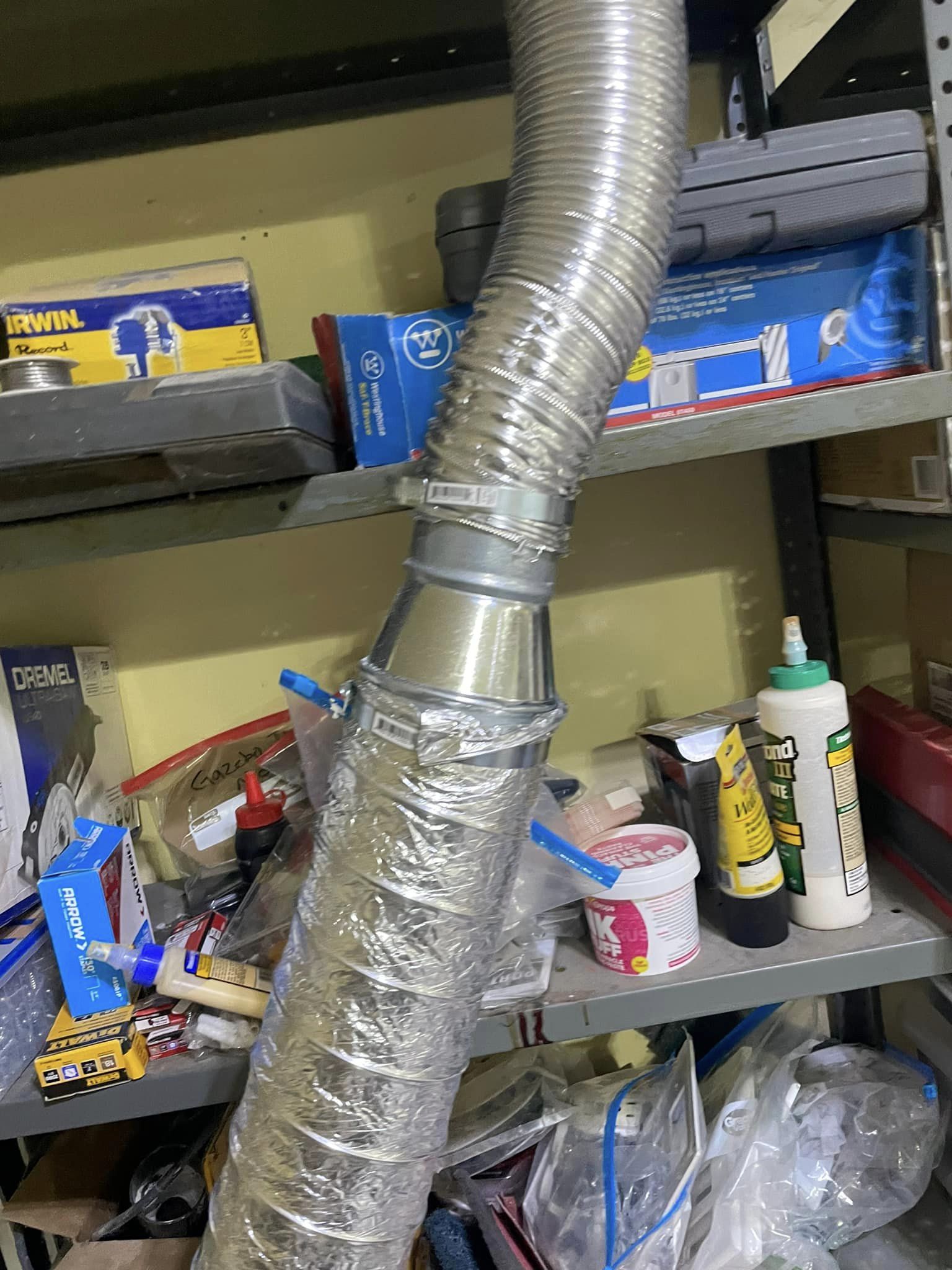How can I prevent nail pops and bulges in my drywall while blowing in insulation with a homemade insulation blower?
Hey there, folks! So, I recently decided to put some spray foam in my attic and let me tell you, it’s really made a difference. I didn’t want the blown-in insulation that was already up there to go to waste, so I’m recycling it by blowing it into the walls of my garage to create a home gym.
I rigged up a DIY insulation blower using a leaf blower, and it seems to be doing the job pretty well. However, I’ve run into a bit of a snag – the drywall is bulging and the nails are popping out. I’ve managed to fix up about half of a wall so far, but I’m trying to address the nail pops and bulges as I go along.
I initially thought it might be because of too much air pressure, so I tried creating an exhaust hole on the wall to relieve some of that pressure. I even made a contraption to cover the holes and allow for air to escape using white speaker cloth. Despite my efforts, I’m still seeing bulges and nail pops. Any advice would be greatly appreciated!
UPDATE: Good news – I managed to solve the issue! I added a variable speed control cord to the blower and turned down





That sounds like quite a bit of cleverness to connect all of that. There’s no access from the attic to the space in your garage walls, maybe you could try pouring it in? Loose insulation should not be tightly packed in there.
Is right, make sure there is no gap above the walls of the garage.
That’s unfortunate. If you’re making a hole to blow it in, you could simply manually shovel it in. 🤷♀️ This way, there will be less internal pressure on your walls.
You need a second hole to allow air out. For densely packed cellulose, they have a hole at the top and bottom. In your situation, you could likely have both holes at the top but placed far apart. Then connect an angled nozzle to blow down as air escapes from the other hole (perhaps with a screen?). You could also consider reducing air volume with a screened vent hole at the top since most of the lifting is done. Gravity would then fill the bay without excessive compaction.
Foam or batt insulation is commonly used in walls for a good reason.
Tom, remember to blow in insulation as well. It’s important.
Make sure to add a second hole to release the air pressure. Consider covering the hole with a screen to prevent the insulation from escaping.
Like this?
Hey, I didn’t notice the second hole in your photos where it’s connected to the wall. Using a mesh or screen would be a better option than a cloth that might trap some of the air you’re blowing in, pressurizing the wall and causing nail pops. Also, placing the exhaust away from where you’re blowing could help.
I’m making do with what I’ve got. Any other materials you recommend? And where do you think the exhaust should go? I’m all ears for suggestions.
The first step would be to consider using a more breathable material. You need to ensure that the airflow out matches the airflow in. If the cloth is blocking the outflow, consider adding a second vent or a larger vent with the cloth to balance out the restriction.
What material do you think would work best? I want to prevent any insulation from leaking. How can we ensure airflow without compromising the insulation?
It’s a bit tricky to answer without knowing what kind of fill material you’re using. Window screen can filter out the smallest particles, while a 1cm x 1cm mesh would provide better airflow.
Using a shopvac foam filter may help it breathe better while still keeping the insulation in place.
I’ve installed insulation in walls without needing extra vents. Perhaps securing the drywall to the studs will help prevent it from bulging.